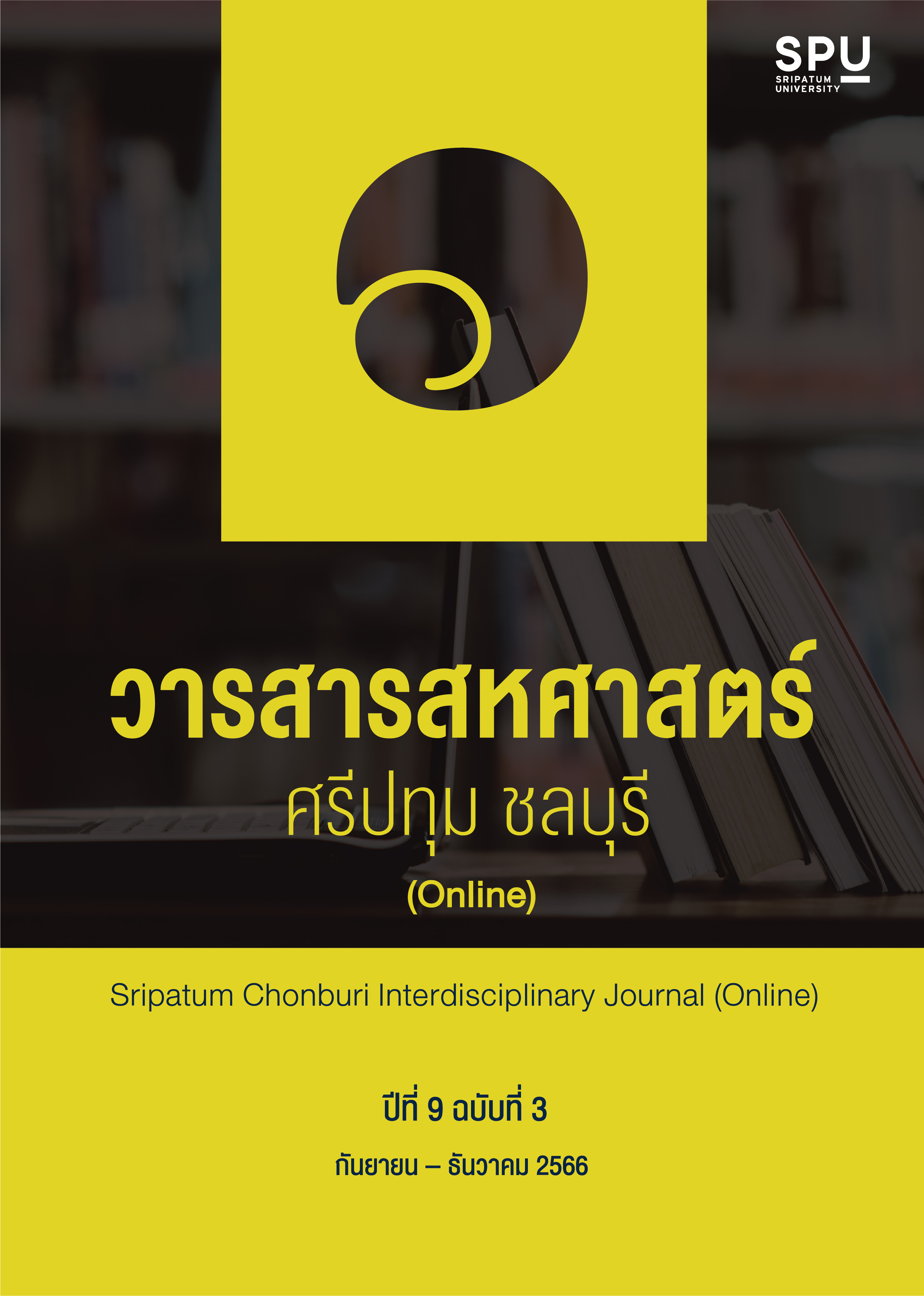การวิเคราะห์รูปแบบและจัดกลุ่มข้อความพรอมป์สำหรับเจเนอเรทีฟเอไอ
คำสำคัญ:
การวิเคราะห์รูปแบบ, การจัดกลุ่ม, เจเนอเรทีฟเอไอ, พรอมป์, ปัญญาประดิษฐ์บทคัดย่อ
งานวิจัยนี้เน้นการวิเคราะห์และจัดกลุ่มข้อความพรอมป์ (Prompt) สำหรับระบบปัญญาประดิษฐ์แบบเจเนอเรทีฟ โดยการวิจัยนี้ ผู้วิจัยใช้ ChatGPT สร้างข้อความพรอมป์ที่มีความหลากหลาย ซึ่งในขั้นตอนการจัดเตรียมข้อมูลได้ประยุกต์วิธีการต่าง ๆ ในกระบวนการประมวลผลภาษาธรรมชาติ โดยกระบวนการวิเคราะห์รูปแบบ (Pattern analysis) ผู้วิจัยใช้เทคนิคการฝังคำ (Word embedding) จำนวน 3 เทคนิค คือ Word2Vec, Bert และ RoBERTa และได้ลดมิติข้อมูลด้วยวิธี PCA, t-SNE และ UMAP จากการเปรียบเทียบการจัดกลุ่มด้วยวิธี K-Means และ Agglomerative แสดงให้เห็นว่าสามารถจัดกลุ่มข้อความพรอมป์ได้ 6 กลุ่ม โดยการจัดกลุ่มแบบ K-Means ร่วมกับการฝังคำแบบ Word2Vec และลดมิติข้อมูลด้วยวิธี UMAP ให้ประสิทธิภาพในการจัดกลุ่มสูงที่สุด มีคะแนน Silhouette อยู่ที่ 0.5197482 คะแนน
เอกสารอ้างอิง
Alexandra. (2023). Top AI & ChatGPT Prompts for Social Media Post Generation (Online). Available: https://socialbee.com/blog/ai-social-media-prompts/ [2023, October 1].
Bozkurt, A., & Sharma, R. C. (2023). Generative AI and prompt engineering: The art of whispering to let the genie out of the algorithmic world. Asian Journal of Distance Education, 18, pp. 1-6.
CloudHQ. (2023). How to Write ChatGPT Prompts for Email (Online). Available:https://blog.cloudhq.net/how-to-write-chatgpt-prompts-for-email/ [2023, October 1].
Dwivedi, Y. K., Kshetri, N., Hughes, L., Slade, E. L., Jeyaraj, A., Kar, A. K., Baabdullah, A. M., Koohang, A., Raghavan, V., Ahuja, M., Albanna, H., Albashrawi, M., A., Al-Busaidi, A., S., Balakrishnan, J., Barlette, Y., Basu, S., Bose, I., Brooks, L., Buhalis, D., Carter, L., & Wright, R. (2023). “So what if ChatGPT wrote it?” Multidisciplinary perspectives on opportunities, challenges and implications of generative conversational AI for research, practice and policy. International Journal of Information Management, 71, 102642.
Hosseini, M., Rasmussen, L. M., & Resnik, D. B. (2023). Using AI to write scholarly publications. Accountability in Research Policies and Quality Assurance, pp. 1-9.
Korzynski, P., Mazurek, G., Krzypkowska, P., & Kurasinski, A. (2023). Artificial intelligence prompt engineering as a new digital competence: Analysis of generative AI technologies such as ChatGPT. Entrepreneurial Business and Economics Review, 11(3), pp. 25-37.
Khan, H. (2023). A formula for composing the best prompts (Online). Available:
https://twitter.com/slow_developer/status/1695027815958405471 [2023, October 20].
Kumar, A. (2023). ChatGPT Prompts Design Tips & Examples (Online). Available:
https://vitalflux.com/chatgpt-prompts-design-tips-examples/ [2023, October 1].
Leexi. (2023). Master the art of generating prompts with ChatGPT (Online). Available:
https://www.leexi.ai/en/business-intelligence/the-7-golden-rules-for-generating-efficient-prompts-with-chatgpt/ [2023, October 1].
Sohail, S. S., Farhat, F., Himeur, Y., Nadeem, M., Madsen, D. Ø., Singh, Y., Atalla, S., & Mansoor, W. (2023). Decoding ChatGPT: a taxonomy of existing research, current challenges, and possible future directions. Journal of King Saud University-Computer and
Information Sciences, 35(8), 101675.
Starita, L. (2023). How to Write AI Prompts: The Key to Better Outputs from Generative AI (Online). Available: https://contently.com/2023/04/13/how-to-write-ai-prompts-for-generative-ai/ [2023, October 1].
Tamsin, S. (2023). THE ART OF WRITING CHATGPT PROMPTS FOR ANY USE CASE (Online).
Available: https://sarahtamsin.com/the-art-of-writing-chatgpt-prompts/ [2023, October 1].
White, J., Fu, Q., Hays, S., Sandborn, M., Olea, C., Gilbert, H., Elnashar, A., Spencer-Smith, J., & Schmidt, D. C. (2023). A prompt pattern catalog to enhance prompt engineering with chatGPT (Online). Available: https://arxiv.org/pdf/2302.11382.pdf [2023, October 1].



